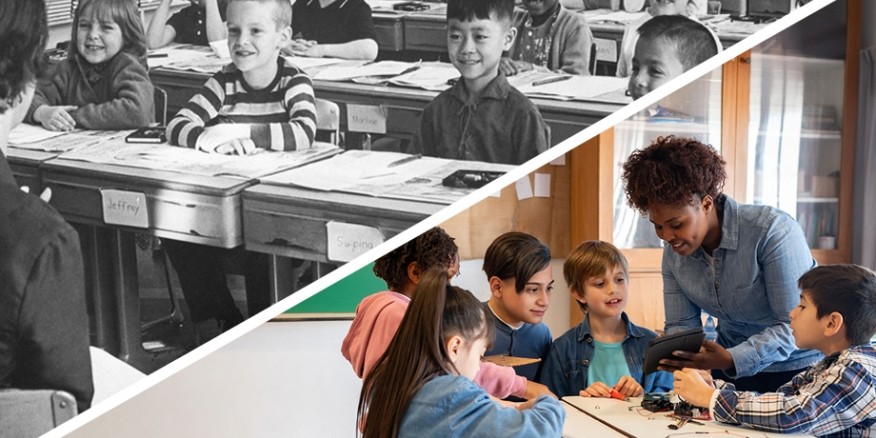Education reform isn’t just about testing or buzzwords. It’s about creating better systems for better learning—so every student, no matter their background, has the tools and support to succeed.
Let’s take a closer look at what education reform really means, what drives it, and how we can make it work for all students—not just a select few.
🏫 What Is Education Reform?
Education reform is the process of making changes to how schools operate in order to:
-
Improve student outcomes
-
Increase equity and access
-
Modernize curriculum and teaching practices
-
Support educators
-
Respond to community needs
This can include shifts in policy, funding, assessment, school structure, curriculum, teacher preparation, and more.
In short, reform is about rethinking the way we “do school”—so it actually works for the world we live in today.
🚀 Why We Need Education Reform
Let’s be real—many parts of our current system are outdated. Students today face:
-
A fast-changing job market
-
New technologies
-
Global challenges
-
Mental health struggles
-
Cultural and linguistic diversity in classrooms
Meanwhile, teachers are under immense pressure, and many schools are still operating with 20th-century models in a 21st-century world.
Reform isn’t optional—it’s essential.
🧩 Key Areas of Education Reform
Here are the areas where reform has the biggest impact:
1. Curriculum and Instruction
Reform means making learning more:
-
Relevant to real-life situations
-
Culturally responsive and inclusive
-
Hands-on and project-based
-
Focused on critical thinking, not just memorization
Example: Schools implementing STEM labs, coding courses, or interdisciplinary learning projects as part of their core programs.
2. Assessment and Accountability
We’re moving beyond the old “teach to the test” model.
Reform knowledge focuses on:
-
Using multiple measures of student learning (not just standardized tests)
-
Including formative assessments, portfolios, and performance tasks
-
Supporting growth, not just achievement snapshots
This gives a fuller picture of what students know and can do—and where they need help.
3. Teacher Support and Development
Reform is impossible without strong, supported educators.
That means:
-
Better preparation programs for new teachers
-
Ongoing professional development tied to real classroom needs
-
Mentorship, collaboration time, and leadership pathways
-
Competitive pay and respect for the profession
Investing in teachers = investing in student success.
4. Equity and Access
A huge focus of reform is making sure every student has what they need to succeed, especially those from marginalized communities.
That includes:
-
Fair funding across schools and districts
-
Support for English learners and students with disabilities
-
Inclusive curriculum and anti-bias training
-
Access to tech, books, meals, and mental health services
Reform that doesn’t center equity isn’t reform—it’s just repackaging the status quo.
5. School Structures and Innovation
Many districts are rethinking how schools are run. This includes:
-
Smaller learning communities
-
Year-round calendars
-
Blended or flexible learning models
-
Community schools with wraparound services
Some reforms experiment with charter schools, magnet programs, or district redesigns to meet student needs more effectively.
💡 What Makes Reform Work?
Not every reform is successful—so what separates real change from a failed initiative?
✅ 1. Community Input
Teachers, parents, and students must have a seat at the table. Top-down mandates don’t work without buy-in.
✅ 2. Clear Goals and Metrics
Reform efforts need a clear vision and ways to track progress over time.
✅ 3. Strong Leadership
Principals and district leaders must guide reform with courage, consistency, and flexibility.
✅ 4. Ongoing Support
Change takes time. One-off training or underfunded pilots lead to burnout and frustration.
✅ 5. Equity Lens
All decisions must ask: Who benefits? Who is left out? True reform is inclusive and just.
📈 Examples of Reform in Action
These real-world examples show what reform can look like:
-
New York City’s Community Schools: Offer mental health, health care, and family support services right on campus.
-
Finland’s Teacher Training Model: Requires all teachers to have master’s degrees and emphasizes autonomy and trust.
-
Project-Based Learning at High Tech High (California): Combines real-world work with core academics in a student-driven model.
-
Restorative Justice Programs: Replace zero-tolerance discipline with conversations and accountability, improving school climate.
✅ Final Thoughts: Reform With Purpose
Education reform doesn’t happen overnight—and it’s never perfect. But when done with thought, inclusion, and a focus on students, it can transform lives.
It’s not just about shiny new programs or trendy buzzwords. It’s about making education work for every learner, preparing students not just for tests, but for life.
Whether you’re a teacher, parent, policymaker, or student—your voice matters in this conversation. Let’s push for a system that reflects the best of who we are and what our students deserve.




